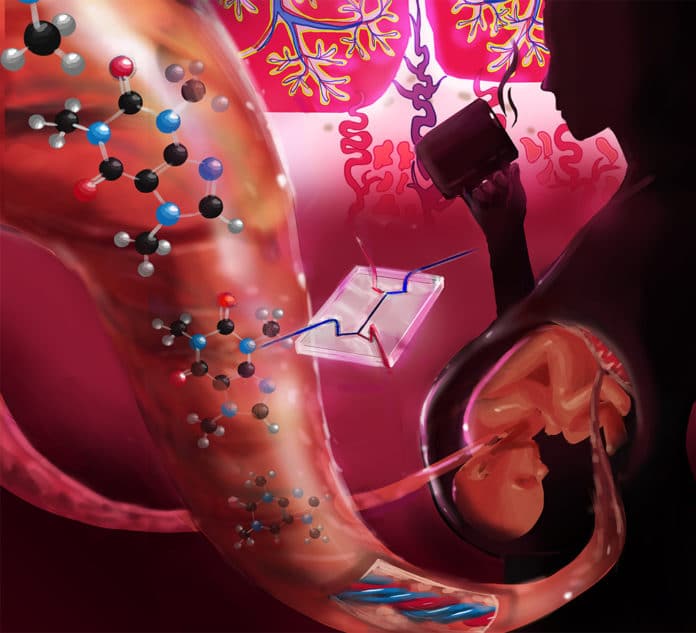Using microfluidic technology, engineers at Iowa State University have invented a placenta-on-a-chip that models transmission of compounds from a mother to fetus. According to scientists, using such kind of techniques could help them better determine what happens in the cellular environment and within the body.
Nicole Hashemi, an associate professor of mechanical engineering at Iowa State University said, “We looked at different organs and decided on developing a placenta model because there aren’t many studies on this important temporary organ.”
He explained, “The placenta develops inside a woman’s uterus during pregnancy. Through the umbilical cord, it provides oxygen and nutrients to the fetus and removes waste from the fetal bloodstream.”
“Animal models of the placenta don’t translate well to human health. And because of the temporary nature of the placenta, there haven’t been a lot of human studies. Those that have been done have shown inconsistent results.”
The engineers decided on caffeine for their initial study as caffeine is a xenobiotic widely consumed on a daily basis. Since a fetus does not carry the enzymes that inactivate caffeine when it crosses a placental barrier, high caffeine intake may harm the fetus, so it is important to quantify the rate of caffeine transport across the placenta.
For the study, engineers introduced a caffeine concentration of 0.25 milligrams per milliliter to the maternal side of the model for an hour and then monitored changes over 7.5 hours. At six and a half hours, the maternal side reached a steady caffeine concentration of 0.1513 milligrams per milliliter and the fetal side reached a steady concentration of 0.0033 after five hours.
Hashemi said, “It’s a relevant medical question: Because of unknown effects from maternal caffeine intake on the fetus, health authorities such as the World Health Organization have recommended restricting caffeine intake during pregnancy.”
“There has also been interest in studying how environmental toxins are transported from mother to fetus. Future studies could include personalizing the technology – actually tuning the model with cells from a mother or fetus to help prescribe medicines or dosages. And maybe one day researchers could study the effects of placental transport of chemicals and compounds on individual cells.”
“We are trying to model the real placenta. Now that we have this placenta-on-a-chip technology in place, we can collaborate with researchers working on all kinds of projects.”
The engineers’ placenta model is described in a paper just released online by the scientific journal Global Challenges published by John Wiley & Sons Inc. Hashemi is the corresponding author. Co-authors are Rajeendra Pemathilaka and Saurabh Aykar, Iowa State graduate students in mechanical engineering; Jeremy Caplin, a former Iowa State graduate student now at Georgia Tech; and Reza Montazami, an Iowa State associate professor of mechanical engineering.
A grant from the Office of Naval Research and a Young Researcher Prize to Caplin from the Lush company supported the development of the placenta model.
